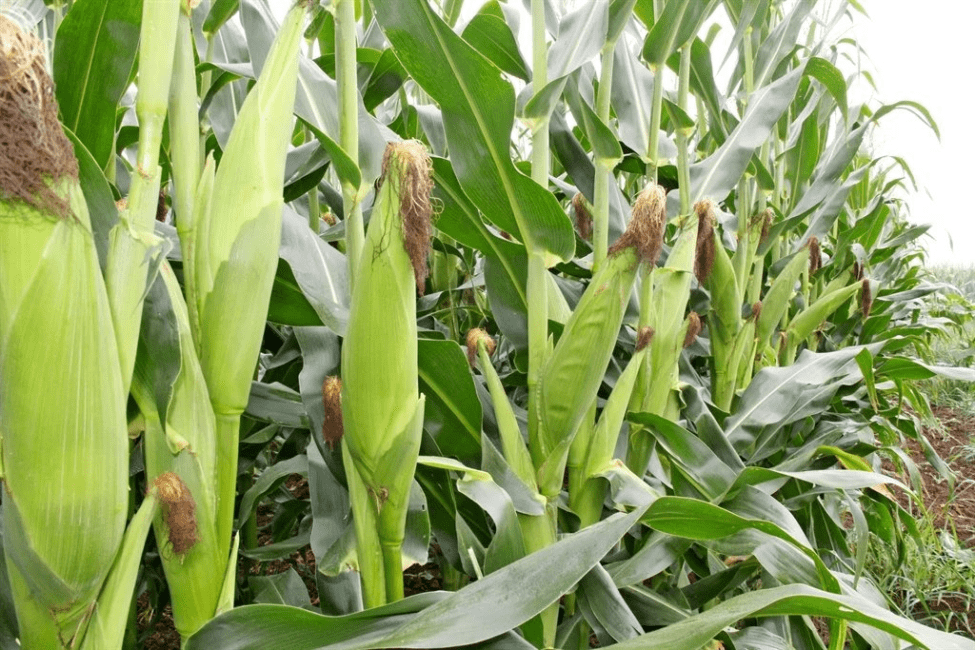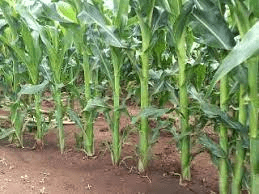Maize, also known as corn is one of the most useful cereal crop in West Africa, foods made out of maize is very nutritious as it is an important source of Carbohydrate, Protein, Iron, Vitamin B, and Minerals, and is known to digest very quickly.
Most Africans tend to consume maize mainly as a starchy base in a wide variety of porridge, pastes, grits, and beer. The green freshly harvested maize cob is eaten either roasted or boiled.
In many Western countries like the USA, maize is used mainly for industrial products processing and for manufacturing of animal feeds or as straight livestock feeds meanwhile, whichever way it is used, maize is the most important cereal crop in Africa with rice and wheat which make up the three most important cereal crops in the world and Hybrid maize cultivation presents viable opportunity for would be maize Farmer to make money and other parts of the world this season.
Maize is very simple to cultivate, easy to maintain, far less delicate that Rice, and take less capital too. Like rice, maize matures very fast, within 2-5 months of planting the crop is ready for harvest, depending on which stage you want to harvest your crop.
Maize grows in a wider range of soil type than rice, almost every part of Nigeria for instance can grow maize on their soil. With the use of Hybrid Maize and mechanized system of farming, yield of maize can reach up to 10.2 tonnes per hectare, with traditional African type of cultivation, production is 2.1 tonnes per hectare which isn’t too bad anyway.
Maize (Zea mays L.) is one of the most versatile emerging crop shaving wider adaptability under varied agro-climatic conditions. Globally, maize is known as queen of cereals because it has the highest genetic yield potential among the cereals.
It is cultivated on nearly 150 m ha in about 160 countries having wider diversity of soil, climate, biodiversity and management practices that contributes 36 % (782 mt) in the global grain production.
In addition to staple food for human being and quality feed for animals, maize serves as a basic raw material as an ingredient to thousands of industrial products that includes starch, oil, protein, alcoholic beverages, food sweeteners, pharmaceutical, cosmetic, film, textile, gum, package and paper industries etc.
How to Cultivate Hybrid Maize for Profit

Here are simple things you need to put in place to cultivate, harvest, and sell maize in your area this season; and if possible, cultivate and sell in large quantity to make more money.
1. Good Land Space
Maize performs better in a well drained fertile loamy soil therefore, i will strongly advice you to look for land that is predominantly loam, if you can lay your hands on forest land, that will be very good because I have personally seen corn perform far better without fertilizer on forest lands. The reason may be due to the decomposed leaves from the forest trees.
Clear the land using manual laborers or mechanical means, the bottom line is to remove the weeds and keep the soil loose for proper maize seedbed and ensure the preservation of the topsoil.
Make sure you plant your maize seed as soon as you clear the soil to allow the maize grow ahead of weeds. Delay in planting will expose the hybrids maize to competition with the weeds.
Read Also: Ways to obtain High Yield from your Maize Farm
2. Get Improved Maize Variety
If possible, look for Recommended Verities of maize to improve your yield.
For Early Season Planting, Look for:-
Yellow Open Pollinated Varieties. Western Yellow 1: TZSR-Y-1 (Streak Resistant)
DMR-LSRY (Downy Mildew & Streak Resistant).
Yellow Hybrids Varieties: 8425-8; 8329-15
White, Open Pollinated Varieties: TZPB (FARZ 27); TZB (FARZ 34); TZSR-W-1;
ZPBSR (Streak Resistant); DMR-LSRW (Downy Mildew & Streak Resistant).
DMR-LSRW (Downy Mildew & Streak Resistant).
White Hybrids: 8321-18; 9022-19; (Striga Resistant).
For Late Season :-
Plant early maturing, streak or downy mildew resistant varieties.
Yellow Open Pollinated Varieties: TZESR-Y; DMR-ESRY (Downy Mildew and
Streak Resistant).
White, Open Pollinated Varieties: TZESR-W; DMR-ESRW (Downy Mildew and Streak Resistant)
POPCORN: White Pop: Yellow composite.
Get any of these seed varieties from your state and institution’s agricultural departments or anywhere you can find them, just ask the right people around you for proper directions.
Give space of about one feet to one and half feet from and between each plant (1-1.5ft). Planting is best by March ending to the first week of April, sometimes up to early May, depending on how early the rain started and the intensity.
3. Apply Fertilizer and Control the Weeds

You may not need fertilizer if the soil is quite fertile. However, the application of fertilizer will aid the crop to yield more.
1. For Open Pollinated Maize Varieties: Forest fallows 10 years or more. Apply 200 kg (4 bags) of NPK 25-10-10 per hectare at planting as band or broadcast application.
2. For Hybrids Corn Varieties: For every high yields maize, you’ll need to apply 600 kg (12 bags) of 25:10:10 per hectare in two splits that is, at planting (200 kg) and 5 to 6 weeks after planting.
3. Manual Weeding: Start the first weeding on your maize farm from 15days after planting and not later than 25days or as soon as you begin to notice the growth of weeds in your farm.
A second weeding may not be necessary before the second application of fertilizer (if there is need for second application of fertilizer) many farmers don’t apply fertilizer twice.
4. Herbicide Application: Apply Atrazine pre-emergence at the rate of 3kg ai/ha on a clean seed bed. After all these has been done, next is to wait for the maturity of your corn for the harvest to begin.
Read Also: Waste To Fertilizer: What You Need to Know
